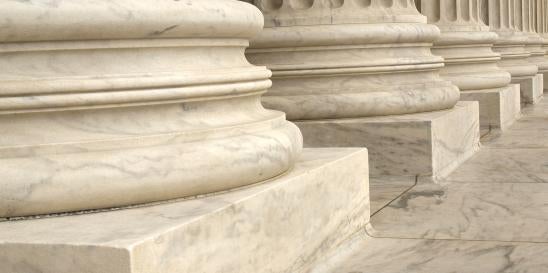On Friday, March 15, a unanimous Supreme Court decided two companion cases (Lindke v. Freed and O’Connor-Ratcliff v. Garnier) that resolved a split in the Circuits concerning whether public officials can be held liable under 42 U.S.C. §1983 for blocking posts on social media sites, in these cases, Facebook.
As the Court noted in Lindke v. Freed, Section 1983—as is well known—provides a cause of action against ‘[e]very person who, under color of any statute, ordinance, regulation, custom, or usage, of any State’ deprives someone of a federal constitutional or statutory right,” here, under the First Amendment, and “Section 1983’s ‘under color of’ text makes clear that it is a provision designed as a protection against acts attributable to a State, not those of a private person.”
In Lindke v. Freed, a Sixth Circuit case, a Michigan-based municipality’s acting city manager deleted critical comments on his Facebook page and then blocked the critic entirely. The specific question before the Court was, when does a public official effectively convert his or her private website into a government site—making it a First Amendment-protected forum—by using it to conduct public business? Accordingly, in Lindke, the Court, per Barrett, J., set forth a two-part test to determine whether the statutory prerequisites have been met. “A public official who prevents someone from commenting on the official’s social-media page engages in state action under §1983 only if the official both (1) possessed actual authority to speak on the State’s behalf on a particular matter, and (2) purported to exercise that authority when speaking in the relevant social-media posts.” The opinion adds that the “appearance and function of the social-media activity are relevant at the second step, but they cannot make up for a lack of state authority at the first.”
This is not an easy test to administer. As the Court noted, “[T]he nature of the social-media technology matters to this analysis. For example, because Facebook’s blocking tool operates on a page-wide basis, a court would have to consider whether [the Official] had engaged in state action with respect to any post on which [the critic] wished to comment.” Therefore, the test can be applied to each and any post, or page within a post.
In O’Connor-Ratcliff v. Garnier, an adjacent case presenting the same question, two members of the board of a California school district who used their Facebook pages for campaigning and school-related issues, first deleted the comments of and then blocked Mr. and Mrs. Garnier, the parents of school students. The Garniers were serial critics of the school board. The Ninth Circuit had evaluated the case in a manner different from the two-stage test the Supreme Court set forth in Lindke, and so the Court, in a per curiam opinion, remanded the case for further proceedings.
As some outlets already have noted, then-President Donald Trump faced the same legal question when he blocked some of his critics from following his account on Twitter (now “X”). The Second Circuit ruled against him, but Trump’s having lost in his 2020 reelection bid mooted his case after he petitioned for cert.
Pulsifer v. United States is at least as interesting for how the Justices lined up as it is for what the 6–3 majority held. Pulsifer, a convicted drug dealer, faced a mandatory minimum sentence of 15 years. He sought to take advantage of the “safety valve” provision of the federal sentencing laws, which allows a sentencing court to disregard the mandatory minimum if the defendant satisfies five criteria, most having to do with the nature of their previous offenses and their guideline point values. The case involved a dispute between the defendant, who argued that he was entitled to the statutory break unless his record met all of the safety-valve restrictive criteria—which his did not—and the government. The government argued that the defendant would be disqualified from relief if he met any of them. The Court’s decision turned on the meaning of the word “and.” Writing for the Chief Justice and Justices Thomas, Alito, Kavanaugh, and Barrett, Justice Kagan ruled against the defendant, holding that although there are two grammatically permissible readings of the provision at issue, only one of them is correct in context. Therefore, the Court declined to apply the rule of lenity. Justice Gorsuch, showing his libertarian chops, wrote the dissent and was joined by Justices Sotomayor and Jackson.
This writer’s guess is that the late Justice Scalia, similarly libertarian as to the individual rights of criminal defendants, likely would have joined Justice Gorsuch, too. In any event, Justice Kagan’s joining the conservative wing of the Court, while Justice Gorsuch sided with two liberals, is yet another example of where the Court’s actual conduct is at odds with popular media stereotypes.




 i
i


